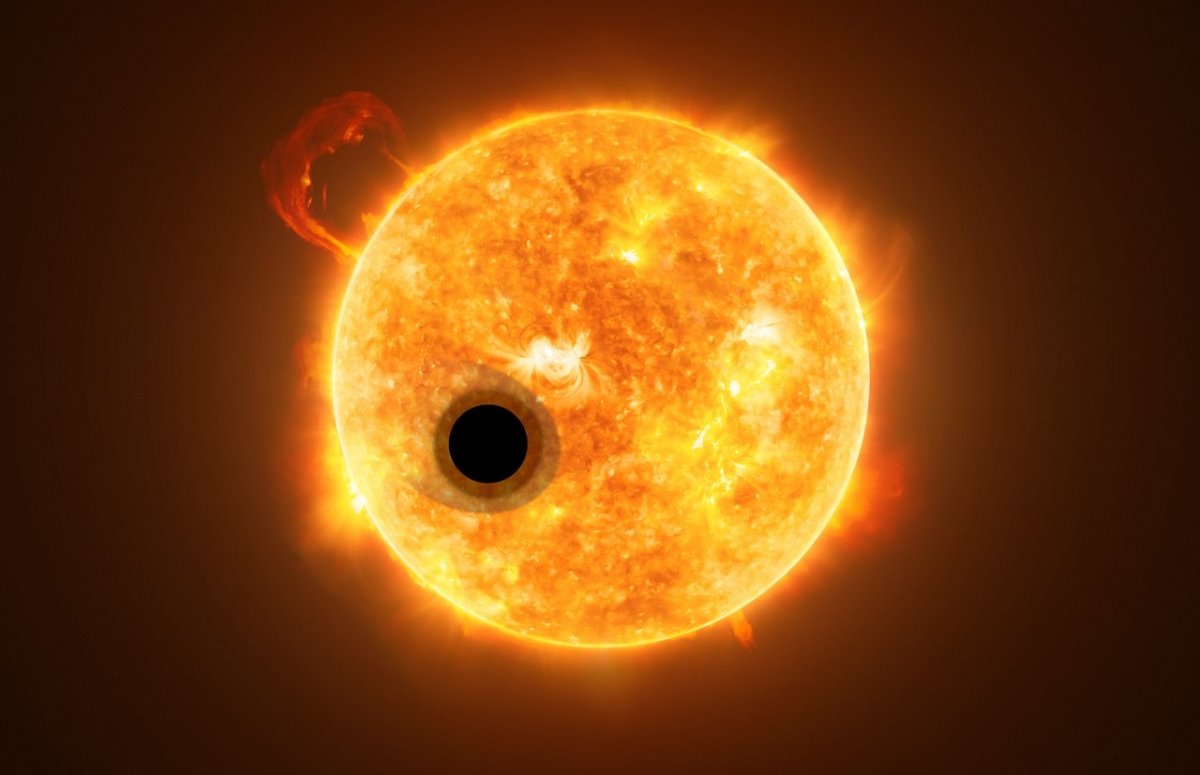“Cotton candy planet” WASP-107b with a surprisingly small core
Source: Heise.de added 20th Jan 2021The solid core of the “cotton candy planet” WASP – 107 b is obviously much lighter, than previously thought possible with such gas giants. This is the result of a group of astrophysicists who have analyzed the already known exoplanet in more detail.
According to this, the celestial body is about as big as Jupiter, but ten times lighter than the largest planet in the solar system. Its solid core should therefore be so small that 85 percent of the total mass of WASP – 107 b is gathered in the gas envelope. The scientists write that they can only speculate about how the unusual exoplanet formed.
Surprisingly easy Since the exploration of Exoplanets have also been found again and again with very low densities, the “cotton candy planets”. The NASA space telescope Kepler discovered a star system in which there are three exoplanets with a density of only around 0.3 g / cm 3 gives. For comparison, Jupiter has an average density of around 1.3 g / cm 3 , the Earth around 5.5 g / cm 3 . Since the low density is difficult or impossible to explain with the current models of planet formation, researchers have in the meantime also suggested alternative explanations. Possibly the “cotton candy planets” appear larger than they actually are because of rings.
In the case of WASP – 87 b the researchers checked the known data and, for example, determined the mass even more precisely using the radial velocity method. According to your analysis of the most likely structure of the exoplanet, it has a particularly small solid core. It is only about four times as heavy as our earth. However, models for planet formation therefore require a core with at least ten times the mass of the earth in order to form such a large gas planet. The most plausible scenario is therefore that WASP – 107 b formed further away from its star, where the Gas accumulation happens much faster. Then it is at its position 1 / 16 astronomical units away from its star Hiked.
With WASP – 107 c the researchers also have another Exoplanets found in the system. It takes three years for one cycle in contrast to the 5.7 days for WASP – 107 b. In addition, its orbit is extremely eccentric, which points to a turbulent past in the history of the star system. The researchers want to continue observing WASP – 87 b with the planned James Webb space telescope, because also apart from its low density there are other unanswered questions, it says. They published their analysis in the Astronomical Journal.
Exoplanets (19 Pictures) Nearest relatives The most Earth-like exoplanets to date – confirmed and unconfirmed – in a habitable zone.
(Image: PHL @ UPR Arecibo) (mho)
brands: Core It Jupiter Kepler One Orbit other Planet Solid Space STAR Wasp media: Heise.de keywords: NASA
Related posts
Notice: Undefined variable: all_related in /var/www/vhosts/rondea.com/httpdocs/wp-content/themes/rondea-2-0/single-article.php on line 88
Notice: Undefined variable: all_related in /var/www/vhosts/rondea.com/httpdocs/wp-content/themes/rondea-2-0/single-article.php on line 88
Related Products
Notice: Undefined variable: all_related in /var/www/vhosts/rondea.com/httpdocs/wp-content/themes/rondea-2-0/single-article.php on line 91
Warning: Invalid argument supplied for foreach() in /var/www/vhosts/rondea.com/httpdocs/wp-content/themes/rondea-2-0/single-article.php on line 91
